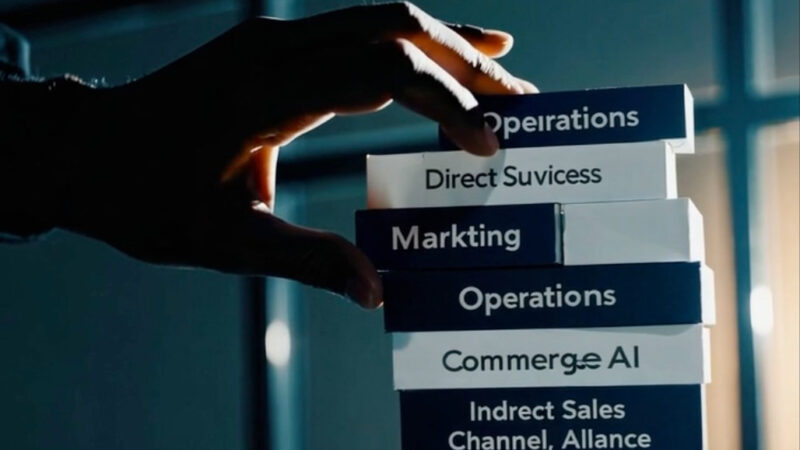R&D at an AI Company
R&D (The Wins)
I had committed to 5 years, and even though I didn’t envision it taking as long as it did, we finally achieved most of what we originally set out to accomplish back in October 2019.
When I first dug into Conversica’s R&D function, it wasn’t just code that needed refactoring—it was culture. The tech was scattered, the teams misaligned, and our innovation engine was sputtering. I wasn’t handed an architecture diagram—I was handed a trust deficit.
At the time, Conversica’s R&D org was fractured across functions: product was guessing, engineering was coding, and data science was chasing the next model. We had brilliant minds, but no common blueprint. AI wasn’t a strategy—it was an experiment.
So we rebuilt. Not from scratch, but from first principles.
We realigned under a unified CTO/CDO structure, merging engineering, data science, and platform ops. We replatformed—not just technically, but culturally. We defined what “done” meant, not by ticket status but by user impact. And we brought AI out of the lab and into the business—with clear focus on Natural Language Understanding (NLU), workflow (decisioning), and Natural Language Generation (NLG), using a hybrid approach from deterministic (ML/DL, rules engine, curated language model) to probabilistic (LLMs, RAG, domain content).
We didn’t treat AI as a magic wand. We treated it as a surgical tool—used only where it provided leverage, never where it added risk. That’s why we built our hybrid architecture:
→ NLU with traditional DL
→ NLG with tightly RAG-grounded GenAI
→ Policy enforcement through deterministic logic
This wasn’t theory—it became platform.
We also embedded ModelOps and PMOps into the DNA. Telemetry wasn’t a dashboard—it was a decision system. Data scientists didn’t just train models—they tuned outcomes. Engineers weren’t building to spec—they were building to story.
By 2024, Conversica wasn’t “building AI.” We were productizing it for enterprise revenue teams, with domain-specific workflows, safe deployment models, and multi-modal reach. And we did it without sacrificing control or customer trust.
R&D – Strategic Headwinds (The Losses)
What held us back early wasn’t lack of talent. It was lack of truth.
Too many quarters were spent pretending throughput was progress. Our data scientists were siloed, solving technical problems nobody asked for. Our engineers were shipping code without context. And our platform—while clever—was bloated with redundancy and riddled with debt.
The worst part? We didn’t know how bad it was until we looked hard.
Technical debt wasn’t just a backlog—it was a tax on innovation. And our org structure amplified the chaos. Data science operated separately from engineering. Thus, platform engineering wasn’t coordinated with AI model teams as tightly as needed. There were no shared metrics, no shared vision, driven by Product.
We weren’t scaling value—we were scaling confusion.
It wasn’t just a tooling issue. It was a leadership issue. Engineering leaders were driving sprints, not roadmaps. Data science leaders were optimizing F1 scores, not business KPIs. Product was building features while AI tried to build intelligence.
It took hard conversations. It took restructuring. And it took replacing some of the wrong leaders with the right ones.
We learned the hard way: sophistication without simplification is sabotage. You can’t build a defensible platform without making bold, strategic architectural choices—and sticking to them.
Advice From One CEO to Another – Building Great R&D in AI Enterprises
Architect Before You Accelerate
The best teams go slow to go fast. Define your AI boundaries. Enforce where GenAI can and cannot operate. Then scale with confidence.
Model Performance Means Nothing Without Business Impact
Ask every data science leader: “What ARR did your model protect?” If they can’t answer, it’s time to retrain—not the model, but the mindset.
Build a Culture of Instrumentation
If you don’t measure latency, accuracy, usage, and retention in real time—you’re driving blind. ModelOps isn’t optional. It’s survival.
Make Tech Debt a First-Class Citizen
Technical debt should be in the board deck. If your engineers can’t say “no” to poorly defined requests, your architecture will say “no” to scale.
Embed R&D in Revenue
Let engineers shadow sales. Let data scientists sit with support. Build tech that feels the pain before it fixes it.
Conclusion
By mid-2025, R&D at Conversica had become more than an execution function. It became a strategic multiplier. We finally transformed from a siloed lab into a market-driven engine for scalable AI. And we did in a space that is the hardest – AI for revenue teams.
We stopped chasing just the bleeding edge (no more academics), and started engineering trust.
We built for scale. We built for control. But most importantly—we built for impact.
Because in the AI age, code is cheap. But clarity? Clarity is priceless.
And great R&D? It’s not about the algorithm. It’s about alignment—of teams, technology, and the truth we’re all building toward.
Strategy isn’t built in slides. It’s forged in hard conversations, late-night pivots, and the messy middle of execution. Every bold move we made as a company lived or died by the strength of our executive team. What follows isn’t just my perspective—it’s the collective experience of those who were in the trenches. The functional leaders who owned the inflection points. Who navigated the trials, learned from the misfires, and helped turn strategy into motion. This is what transformation really looks like—function by function, leader by leader, decision by decision.
- Executive Team Management
- Direct Sales
- Indirect Sales / Channel / Alliances
- Marketing
- Customer Success Management
- Technical / Customer Support
- Professional Services
- Product Management
- R&D
- Cloud Operations / DevSecOps
- Legal / Security / Compliance
- HR / People
- Finance
- International Operations
- Corporate Development
- Board Management



